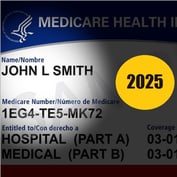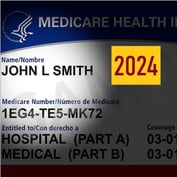What You Need to Know
- Medicare surcharges for higher income retirees can take bite out of income.
- With appropriate income withdrawal strategies, your clients can lessen their exposure to these charges.
- Roth IRAs, life insurance and reverse mortgages can be valuable tools.
Retirees are declaring bankruptcy at far greater rates today than in years past. In fact, the bankruptcy rate for those 65 and older has increased by more than 200% from 1991 to today.
One major reason for this rise in bankruptcies is the soaring cost of medical care. Case in point: A 65-year-old couple retiring in 2021 will need a staggering $300,000 to cover their health care and medical expenses throughout retirement, according to Fidelity Investments’ latest annual retiree health care cost estimate.
Financial advisors need to be aware of the long-term risks that may arise from these health care costs and should be prepared with solutions. In addition, they need to understand how Medicare’s income-related monthly adjustment amount (IRMAA) can affect retirees’ financial security.
IRMAA is a means testing program that was established in 2003 to help extend Medicare’s solvency by increasing the premium that some Medicare beneficiaries pay based on their income. Since 2003, IRMAA’s income brackets, calculated from a retiree’s prior two years’ modified adjusted gross income (MAGI), determine the surcharges that higher earners pay.
Individuals who reported MAGIs under $85,000 and married couples filing jointly who reported MAGIs under $170,000 on their 2019 returns are paying the current Medicare part B premium of $148.50 a month.
Individuals and couples reporting higher MAGIs in 2019 are currently experiencing an IRMAA surcharge on both Part B and Part D. These surcharges are assessed across five levels. At their worst, if a single filer’s MAGI exceeds $500,000 and a couple’s MAGI exceeds $750,000, the surcharge would be more than double the basic Medicare premium. Someone paying the premium plus the surcharge could be paying more than three times the basic Medicare premium compared to those not impacted by IRMAA.
Indexed to CPI-U
Fortunately, legislation was passed in 2020 resulting in IRMAA brackets now being indexed to the Consumer Price Index for Urban Consumers (CPI-U). This means that a retiree will need to have a higher MAGI than in previous years to be subject to the surcharges. The MAGIs for 2021 are $88,000 for single filers and $176,000 for joint filers.
But there are still a couple of subtle yet significant traps that advisors can help their clients avoid when setting up retirement savings and retirement income distribution plans. These can be triggered by:
- Overspending at the start of retirement. Many retirees tend to spend more at the beginning of retirement when they are healthy, active and checking off their bucket list items. Because IRMAA surcharges are calculated based on a two-year “lookback” period for MAGI, clients can be hit with IRMAA surcharges even if their income drops significantly in mid-retirement.
- Onset of required minimum distributions. Americans are required to make withdrawals from most retirement plans — except Roth IRAs — when they reach the age of 72. The amount of the withdrawal is based on the client’s remaining life expectancy as determined by the IRS’ unified table and the Dec. 31 total qualified account value.
The larger the year-end account value, the higher the annual RMD. In the early years of RMDs, the investment balance can grow faster than the percentage the RMD calculation requires, and consequently as the RMD factor increases due to aging, it is applied to a larger investment value. This could catapult clients into a higher IRMAA bracket, resulting in higher premium surcharges.
6 Strategies for Avoiding IRMAA Issues
1. Don’t assume nonqualified accounts should be used first in a liquidation order strategy.
A popular pre-retirement accumulation strategy is to defer taxes for as long as possible. The assumption is that many people will be in a lower tax bracket in retirement than they were while still working. Unfortunately, continuing to defer taxes on distributions from qualified accounts (i.e., 401(k)s, IRAs, 403(b)s, 457s, etc.) after retirement by taking income from nonqualified accounts first, could result in the qualified account balance(s) growing so large that when the retiree reaches age 72 when they are required to start taking distributions, the RMD not only forces more income than the retiree wants or needs, but also moves them into an IRMAA surcharge bracket on their Medicare premiums.
This could result in over $100,000 of future IRMAA charges that could be avoided with proper planning. There is no “rule of thumb” for liquidation order that works best for everyone. IRMAA avoidance is one factor that influences liquidation order, but there are others that should be considered.
2. Consider Roth conversions.
A Roth conversion, in which all or part of the balance of an existing traditional IRA is converted to a Roth IRA, is another way to avoid getting bumped into higher IRMAA brackets.
This may result in paying more taxes and IRMAA surcharges for a short period now but can avoid ongoing IRMAA surcharges later if the client is forced to take more income due to higher RMDs. Keep in mind that Medicare determines your IRMAA bracket by looking at your tax return from two years prior to RMDs. If at all possible, complete your Roth conversions by age 69.
3. Use RMDs for charitable contributions.









 June 10, 2021 at 04:07 PM
June 10, 2021 at 04:07 PM







